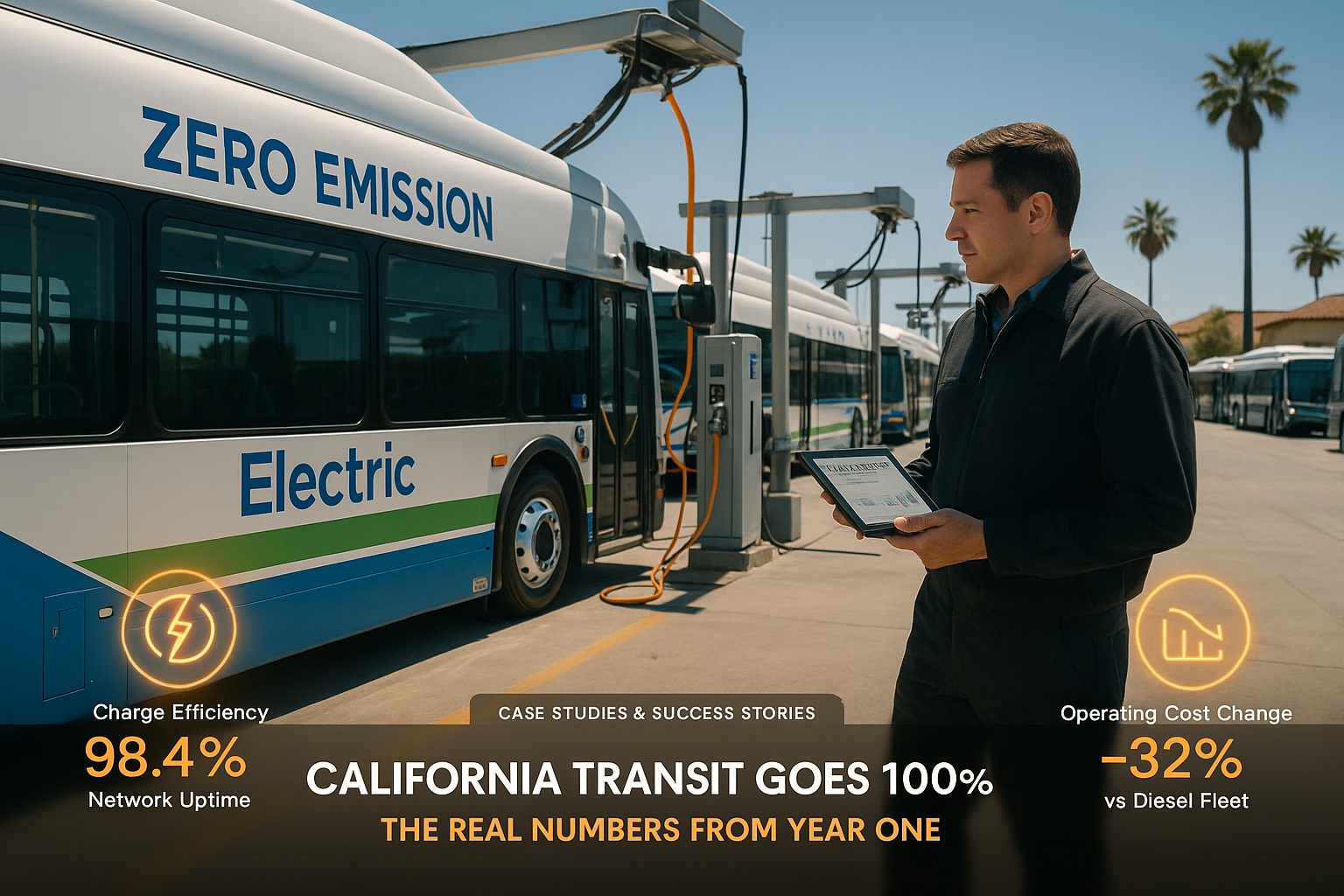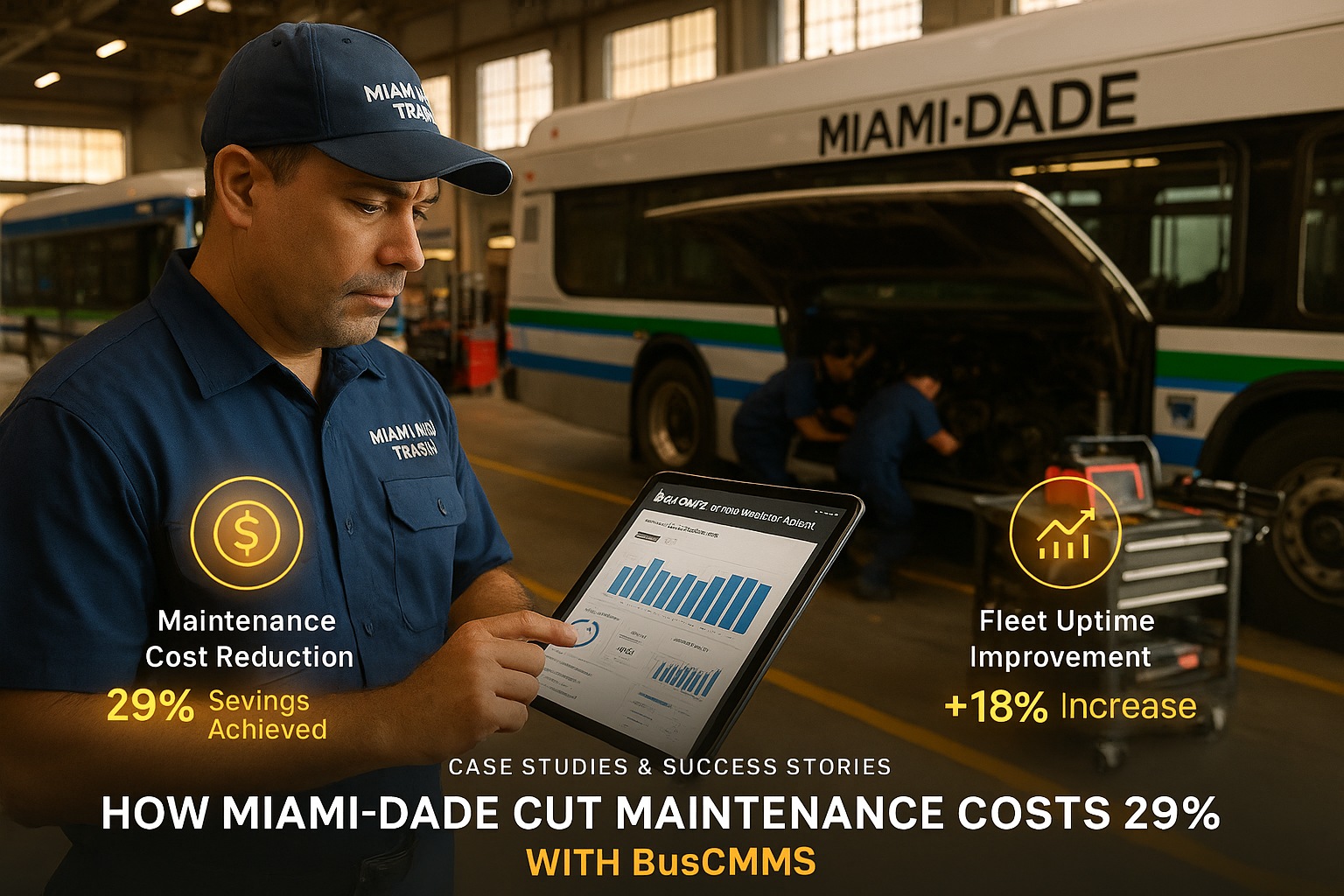Managing a diesel bus fleet means making countless decisions that directly impact your bottom line, but few are as critical as choosing the right engine oil. Get this wrong, and you're looking at premature engine failures, increased maintenance costs, and unexpected downtime that can cripple your operation. Get it right, and you'll extend engine life, reduce maintenance expenses, and keep your fleet running like clockwork.
The challenge? The diesel engine oil market is flooded with options, each promising to be the "best" for your fleet. Synthetic, conventional, high-mileage, heavy-duty – the choices seem endless. But here's the truth: there's no one-size-fits-all solution. The "right" oil depends on your specific engines, operating conditions, and maintenance strategy.
In this comprehensive guide, we'll cut through the marketing hype and give you the practical knowledge you need to make informed decisions about diesel engine oil for your bus fleet. Whether you're managing city transit buses, school buses, or charter coaches, this guide will help you optimize your oil selection and maintenance strategy.
Understanding Diesel Engine Oil Basics
Before diving into specific recommendations, let's establish the fundamentals. Diesel engine oil serves multiple critical functions: it lubricates moving parts, removes heat from the engine, neutralizes acids formed during combustion, and keeps the engine clean by suspending contaminants until they can be filtered out.
Modern diesel engines operate under extreme conditions – high temperatures, pressures, and loads that would destroy gasoline engines. This means diesel engine oils must be formulated differently, with robust additive packages that can handle these demanding conditions while maintaining their protective properties over extended drain intervals.
Key Fact: Diesel engines typically operate at higher compression ratios (14:1 to 18:1) compared to gasoline engines (8:1 to 12:1), generating more heat and requiring oils with superior thermal stability.
The oil you choose directly impacts fuel economy, emissions, maintenance intervals, and engine longevity. Premium oils might cost more upfront, but they often deliver better value through extended drain intervals, improved fuel efficiency, and reduced maintenance costs. Understanding these trade-offs is crucial for making cost-effective decisions.
Viscosity Grades: Finding the Sweet Spot
Viscosity is probably the most important specification to understand when selecting diesel engine oil. It determines how well the oil flows at different temperatures and how effectively it protects engine components under various operating conditions.
Most modern diesel bus engines use multi-grade oils like 15W-40, 10W-30, or 5W-30. The first number (followed by "W" for winter) indicates the oil's flow characteristics at low temperatures, while the second number represents its thickness at operating temperature. Lower numbers mean better cold-weather performance, while higher numbers provide better protection under high-temperature, high-load conditions.
| Viscosity Grade | Best For | Climate Considerations |
|---|---|---|
| 5W-30 | Modern engines, fuel economy priority | Cold climates, year-round use |
| 10W-30 | Moderate climate operations | Mild winters, not extreme cold |
| 15W-40 | High-mileage engines, heavy-duty use | Warmer climates, minimal cold starts |
Consider your operating environment carefully. If your buses start in sub-zero temperatures, a 5W-30 oil will provide better cold-start protection than a 15W-40. However, if you're operating in consistently warm climates with high-load conditions, a 15W-40 might offer better protection under stress.
Don't overlook the impact of viscosity on fuel economy. Thinner oils (like 5W-30) typically provide better fuel efficiency due to reduced internal friction, but they may not offer adequate protection in severe-duty applications. Work with your engine manufacturer's recommendations and consider your specific operating conditions.
API Classifications and Performance Standards
The American Petroleum Institute (API) classification system is your roadmap to understanding oil performance capabilities. For diesel engines, you'll encounter categories like CK-4, CJ-4, and CI-4 Plus. These aren't just random letters – they represent specific performance standards that oils must meet through rigorous testing.
The current top-tier specification is API CK-4, introduced in 2017 to address the needs of modern diesel engines with advanced emissions systems. CK-4 oils offer improved oxidation resistance, better protection against oil consumption, and enhanced compatibility with aftertreatment systems like diesel particulate filters (DPF) and selective catalytic reduction (SCR) systems.
If you're running newer buses (2017 and later), prioritize CK-4 rated oils. They're backward compatible with older engines but provide the advanced protection that modern emission systems require. For older fleets, CJ-4 oils are still excellent choices and may offer cost savings without sacrificing protection.
Important Note: Never use oils with API ratings lower than what your engine manufacturer specifies. Using outdated oil formulations can void warranties and cause premature engine damage.
Beyond API ratings, pay attention to Original Equipment Manufacturer (OEM) specifications. Companies like Caterpillar, Cummins, Detroit Diesel, and Volvo have their own testing protocols that oils must pass to earn their approval. These specifications often provide more detailed guidance for specific engine families and operating conditions.
Synthetic vs. Conventional: Making the Right Choice
The synthetic versus conventional oil debate isn't just about marketing – it's about understanding the fundamental differences and choosing what makes sense for your operation. Conventional oils are refined from crude oil and contain natural impurities that can limit performance. Synthetic oils are engineered at the molecular level to provide superior performance characteristics.
Synthetic oils typically offer better low-temperature flow, superior high-temperature stability, longer drain intervals, and improved fuel economy. They also maintain their protective properties longer under severe operating conditions. However, they cost significantly more upfront, which can be a barrier for budget-conscious operations.
Semi-synthetic (synthetic blend) oils offer a middle ground, combining some benefits of synthetic technology with the affordability of conventional oils. They're often the sweet spot for many fleet operations, providing improved performance without the premium price of full synthetics.
Consider your total cost of ownership, not just the price per gallon. If synthetic oil allows you to extend drain intervals from 10,000 to 15,000 miles while improving fuel economy by 2-3%, the higher upfront cost may be justified. Factor in reduced maintenance labor, fewer oil changes, and potential fuel savings when making your decision.
For high-mileage buses with older engines, conventional oils might be the practical choice. These engines may not realize the full benefits of synthetic oils, and the cost difference could be better invested in other maintenance priorities.
Maintenance Integration and Oil Analysis
Choosing the right oil is only half the battle – you need a maintenance strategy that maximizes its effectiveness. This means implementing proper oil analysis programs, establishing appropriate drain intervals, and ensuring your maintenance team understands the importance of oil quality.
Oil analysis is your window into engine health and oil performance. Regular sampling can identify contamination issues, wear patterns, and oil degradation before they become major problems. Most commercial labs offer diesel engine oil analysis packages that include tests for viscosity, total base number (TBN), metal content, and contamination levels.
Use oil analysis data to optimize your drain intervals. Many fleets find they can safely extend intervals beyond manufacturer recommendations when using high-quality oils and monitoring oil condition. This can result in significant cost savings and reduced maintenance downtime.
Streamline Your Fleet Maintenance Management
Take the guesswork out of oil changes and maintenance scheduling. Our comprehensive fleet management platform helps you track oil types, schedule changes, and monitor engine health across your entire bus fleet.
Getting Started Book a DemoDocument everything. Keep detailed records of oil types, drain intervals, analysis results, and any engine issues. This data becomes invaluable for identifying patterns, optimizing maintenance schedules, and making informed decisions about oil selection for future purchases.
Train your maintenance team on proper oil handling and storage procedures. Even the best oil can be compromised by contamination during storage or installation. Ensure your team understands the importance of cleanliness and proper procedures when changing oil and filters.
Conclusion
Selecting the right diesel engine oil for your bus fleet isn't about finding the most expensive option or the latest marketing trend – it's about understanding your specific needs and making informed decisions based on factual information. Consider your engine types, operating conditions, maintenance capabilities, and budget constraints when making your choice.
Remember that oil selection is just one part of a comprehensive maintenance strategy. The best oil in the world won't help if you're not following proper maintenance procedures, monitoring oil condition, and addressing issues promptly. Invest in quality oil, implement proper maintenance practices, and use data to continuously improve your approach.
The diesel engine oil market will continue evolving as emission requirements become more stringent and engine technology advances. Stay informed about new developments, maintain relationships with reputable suppliers, and be prepared to adapt your strategy as conditions change.
Your buses are the backbone of your operation. Give them the protection they deserve with the right oil, proper maintenance, and a commitment to continuous improvement. Your engines – and your bottom line – will thank you.
Frequently Asked Questions
A: Oil change intervals depend on several factors including oil type, operating conditions, and engine age. Conventional oils typically require changes every 7,500-10,000 miles, while synthetic oils can often go 15,000-25,000 miles. Use oil analysis to determine optimal intervals for your specific operation rather than relying solely on manufacturer recommendations.
A: For buses with over 200,000 miles, synthetic oil may not provide enough additional benefit to justify the higher cost. However, if your analysis shows the engine is in good condition and you can extend drain intervals significantly, synthetic oil might still be cost-effective. Consider synthetic blends as a middle-ground option.
A: While mixing oils of the same viscosity and API rating is generally safe, it's not recommended as a regular practice. Different brands have different additive packages that may not work optimally together. If you must mix oils, use the same viscosity grade and API rating, and change the oil completely at the next service interval.
A: CK-4 is the newer specification (introduced in 2017) that offers improved oxidation resistance, better protection against oil consumption, and enhanced compatibility with modern emission systems. CJ-4 is still a good specification for older engines, but CK-4 provides backward compatibility and superior performance for newer buses with advanced aftertreatment systems.
A: Regular oil analysis is the best way to monitor oil performance. Look for trends in viscosity, total base number (TBN), and metal content. Sudden changes in these parameters can indicate problems. Also monitor fuel economy, oil consumption, and engine performance – deterioration in these areas may indicate inadequate oil protection.








